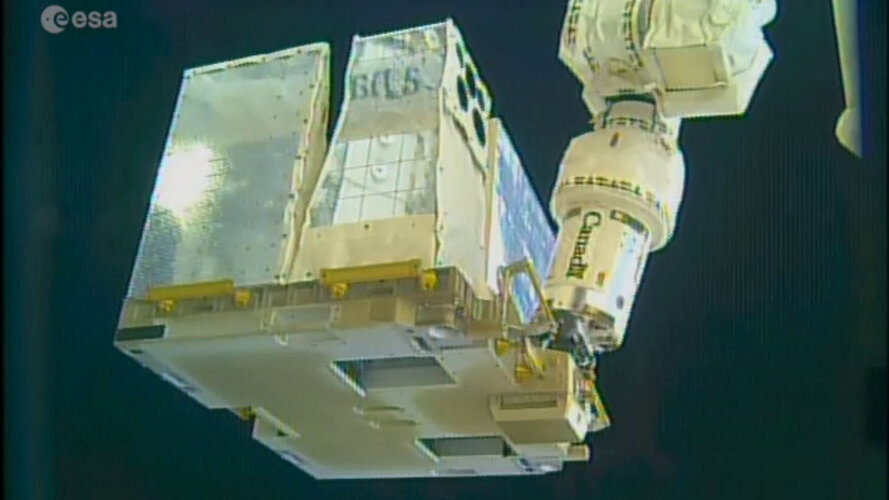
The Atmosphere–Space Interactions Monitor, or ASIM for short, is a first-of-its-kind instrument. Dubbed the ‘space storm hunter’ monitoring electric events in Earth’s upper atmosphere from the International Space Station since 2018, ASIM has been keeping researchers busy. From its vantage point outside the International Space Station, ASIM has provided tons of data on ‘transient luminous events’ sporting names like blue jets and red sprites taking place above thunderstorms in the upper atmosphere.
On 10 January ASIM was moved to another spot outside the Space Station to gracefully make place for an American technology demonstration payload. The move was performed by the Station’s robotic arm. The video was recorded using the International Space Station cameras and sped up 20 times for playback.
From its new vantage point, just next to its current one, ASIM is pointing in a different direction, slightly more towards the horizon instead of straight down. This will be help researchers work out how much our atmospheric influences the processes of electrical discharges. It’s like viewing a firework display from the side: one can enjoy the shapes more than if one is just below the display!
Mounted outside the Columbus module of the Space Station and designed to look for electrical discharges born in stormy weather conditions in Earth’s upper atmosphere, ASIM detected a unique gamma-ray burst from outer space. This fortuitous observation was published in Nature magazine. and recently the facility detected another peculiar phenomenon: a burst of photon radiation coming from another galaxy.
The spurt turned out to be from an explosive flare from a magnetar located 10 million light-years away in a distant galaxy. Magnetars are a special type of neutron star – the collapsed core of what was once a supergiant star.
Neutron stars are known to spin very fast. The magnetic field of magnetars, however, is believed to be so powerful that it slows down the spin, wearing away the star’s crust. This slow-spin decay produces powerful bursts of radiation, x-ray and gamma-rays in particular.
Thanks to its design – ASIM is a collection of optical cameras, photometers and an X- and gamma-ray detector – and performance, it was able to record this gamma-ray photon outburst at extremely highspeeds.
The measurements revealed the magnetar’s unexpected, periodic “flickering” and are helping to shed light on the physics of magnetars and the structure of neutron stars in general, one of the hottest topics in current research. The results were published in the December issue of Nature magazine.
ASIM was built by Danish company Terma, Danish Technical University, University of Bergen in Norway and the University of Valencia in Spain for the European Space Agency.
Click here for original story, Robotically moving ASIM the storm hunter on the International Space Station
Source: ESA Top Multimedia